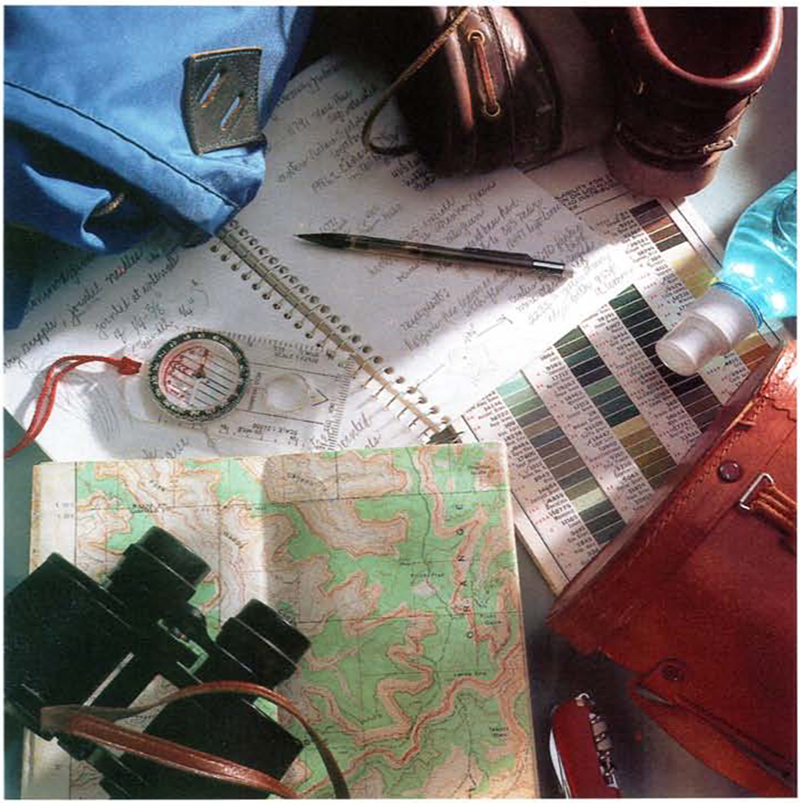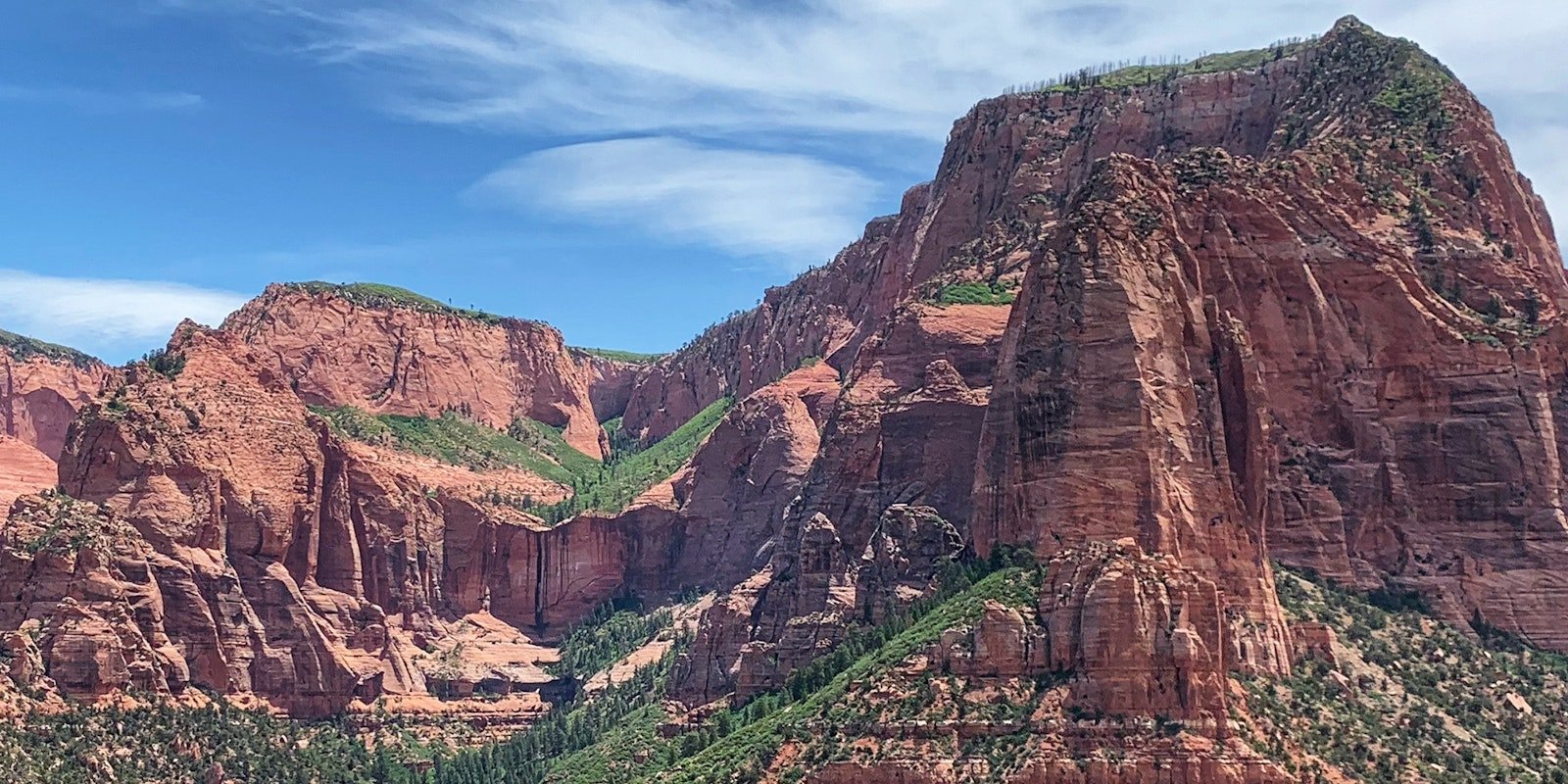As Sharon Alderman traveled in the days before cellphones, she recorded careful notes about what she saw to use later in her handwoven memories of the trips. Below, you can read an excerpt from an article she wrote describing how she did it; the entire piece is in the May/June 1997 issue of Handwoven. It is well worth reading in full—and has inspired us to add a small notebook, mechanical pencil, and color card to our travel bag, alongside our cellphone. —Handwoven editors
Summer is when many of us visit places we want to see for the first time, or return to places we love. Sometimes, it is possible to capture memories of that place through found objects such as a pinecone, a seashell, a rock, a bird feather. Photographs help me with shapes and proportions, but not with colors (which never quite match what I see).
I have another way to remember my travels: I like to gather the colors and textures of these places as I experience them, and weave them into cloth when I get back home. As a bonus, when I’m collecting notes about a location, I’m forced to observe everything more closely than I might otherwise.
Basic Tools
I travel with a small spiral-bound sketchbook which I keep closed with a rubber band that also secures a soft-lead mechanical pencil. When I make notes, I record the date and time as well as the place, because the quality of light depends on the time of day and time of year.

At first, I was reluctant to draw anything in my notebook, feeling that my skills were inadequate. As time went by, I realized no one but me would ever see this notebook—which made me bolder. Now, I draw the details or shapes of things I see without the fear of making an ugly drawing, which freed me to make drawings that I like!
I also carry color charts that show as many colors as possible, along with color numbers or names so I can record them in my sketchbook. I prefer using charts that include swatches of thread or yarn rather than printed versions, because the way the light is reflected from the surface of yarns is important to me, and because I like thread and the cloth made from it. (Ed. note: DMC has a Thread Shade Card to consider adding to your traveling toolkit.)
 Delicate flower petals tinged with pink are among the rewards of a closer look. Photo by Tiffany Warble
Delicate flower petals tinged with pink are among the rewards of a closer look. Photo by Tiffany Warble
Recording Colors
Recording the colors from the landscape, a flower, a fish’s scales, or a bird’s feather takes practice. This is how I approach it.
First, I identify the color’s place in the spectrum—its hue. For example, “This bark is basically orange.” Then I consider how light or dark it is—its value. Finally, I consider how pure or bright it is—its saturation.
The hue brings me to the right section of my color chart, and the remaining steps refine my choice from the possibilities I find there.
Keep on Going
Read the rest of Sharon’s article to learn about:
- Capturing textures;
- The fine art of looking;
- How to record what you see; and
- What to do with your notes when you’re back at home.
Above: Sharon’s notebook, color card, and other travel tools. Photo by Joe Coca
Another Handwoven Souvenir: Designer Lilija Lapsa’s Memories of Venice pillows were inspired by the colorful houses she saw on a trip to the Venetian island of Burano. This project is free for current Handwoven subscribers.

